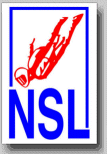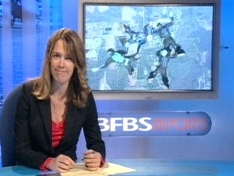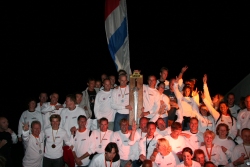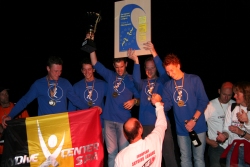
National
Skydiving
League
226 Pecan Street
Deland FL 32724
tel: (386) 801-0804
© 2003 - 2024
All Rights Reserved


226 Pecan Street
Deland FL 32724
tel: (386) 801-0804
© 2003 - 2024
All Rights Reserved


The same story mentioned that the British Army team members were recently interviewed by the Armed Forces TV channel, BFBF, and that the NSL News would try to capture the interview. The NSL News was not able to capture the TV program directly. However, team captain Dave Tyler provided a link to the video file that shows the well done show, which can be viewed by clicking here.
NSL and ESL have now completed the last step to fully synchronize the rules and classes for the 4-way competitions. The ESL added the AA Class to the system for the 2006 season, while the NSL adopted the ESL rules for the Rookie Class exits. Only the terminology is still a little bit different between the United Kingdom and the NSL rules.
The main reason for accepting this change is the fact that any team always has the option to use a standard exit (like B, E, M, O) at any time without any rule requirements. This counts for all competition classes. The judges only want to see the first formation of the sequence, no matter what the teams do to present it after the exit.

Andy Scott updated the website of the British Parachute Association (BPA) for the 2006 season on his end: "Whilst 2006 rules are finalised at council, a general update to note is that 4-way will see the 4th tier introduced as a trial across all meets in 2006, so the dive pools are as follows: Senior Class - all Random Formations/all Blocks, AA Class - all Random Formations/Blocks 1,2,4,6,7,8,9,11,13,14,15,18,19,20,21,22, A Class - all Random Formations/Blocks 2,4,6,7,8,9,19,21, Junior Class - All Random Formations only - including all Random Formations for exit point."
The British Senior Class is obviously identical with the AAA/Open Class, and the Junior Class is identical with the NSL Rookie Class. Andy Scott confirmed the same synchronization between ESL and NSL rules for the 2006 season in his notes for an update in the British skydiving magazine:

The NSL has converted the Junior Class (called Rookie Class in the USA ) to have all Random Formations as exits to help align our national competitions, which will then be able to fully utilise the same draws. With more alignment, the international meets should really hot up this year. Some of last years successes were obvious with the ability to compete against fellow brits on training in the USA and also the outstanding performance at the ESL Championship 2005. I hope this interest and growth can continue and maybe we will see some more foreign teams at the UK Nationals this August."
The NSL looks forward to the next synchronized season between ESL and NSL, this time for all competition classes. The NSL Schedule of Events already shows several international meet weekends, and the event calendar is far from being complete at this point. Andy Scott made the point: "With more alignment, the international meets should really hot up this year."